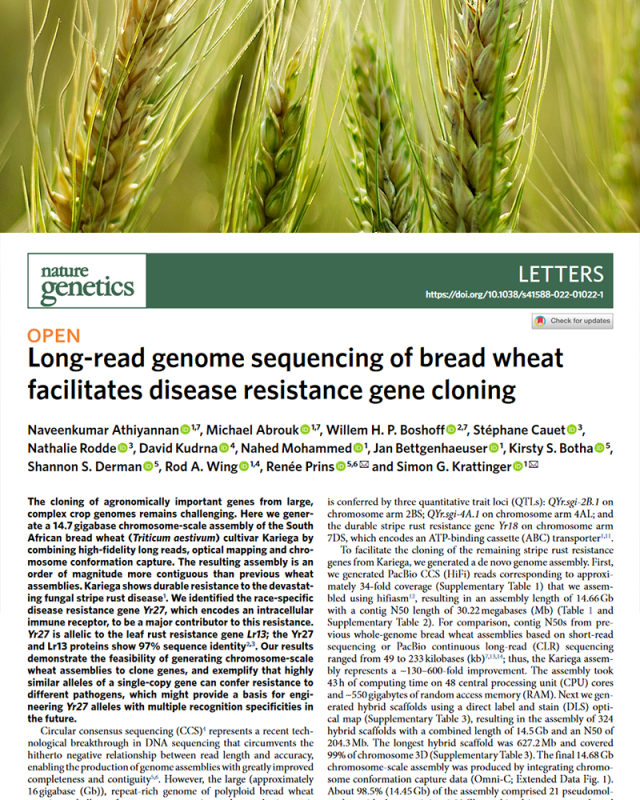Long-read genome sequencing of bread wheat facilitates disease resistance gene cloning
Yellow rust, a devastating disease of wheat crops caused by the fungal pathogen Puccinia striiformis f. sp. Tritici, appeared in South Africa in 1996.
The South African soft wheat cultivar shows resistance to yellow rust.
To transfer this trait to new cultivars under development, several laboratories worked together to obtain a high-quality genome with the aim of cloning the gene determining resistance to stripe rust.
The combination of high-fidelity sequencing (PacBio), optical genome mapping (Bionano), and chromosome conformation capture (Omni-C) technologies resulted in a 14.7 Gb chromosome-wide genome assembly of the kariega cultivar.
De novo sequencing first yielded an assembly comprising, 5055 contigs with an N50 of 30.22 Mb.
Then the optical map (120 maps, N50=164 Mb) was used to order them. The result is a hybrid assembly of the sequencing and optical map data with 324 scaffolds and a N50 range of 204.3 Mb.
For the production of the optical map of this genome, we encountered a previously unseen difficulty.
The extraction of high molecular weight DNA, usually performed from young leaves at the CNRGV, gave a relatively small molecule size, less than 150 kb.
To remedy this, we developed an extraction protocol from roots that allowed us to produce the large DNA molecules required to obtain a high-quality optical map.
Using the assembled genome sequence, Cengen succeeded, as expected, in cloning the gene responsible for yellow rust resistance.
This publication is the result of collaborative work between the University of KAUST (Michael Abrouk, Hanin Ahmed, Naveenkumar Athiyannan, Simon Krattinger) also involving CenGen. At the CNRGV, this project has been realized by Stéphane Cauet, Nathalie Rodde and Caroline Callot.

